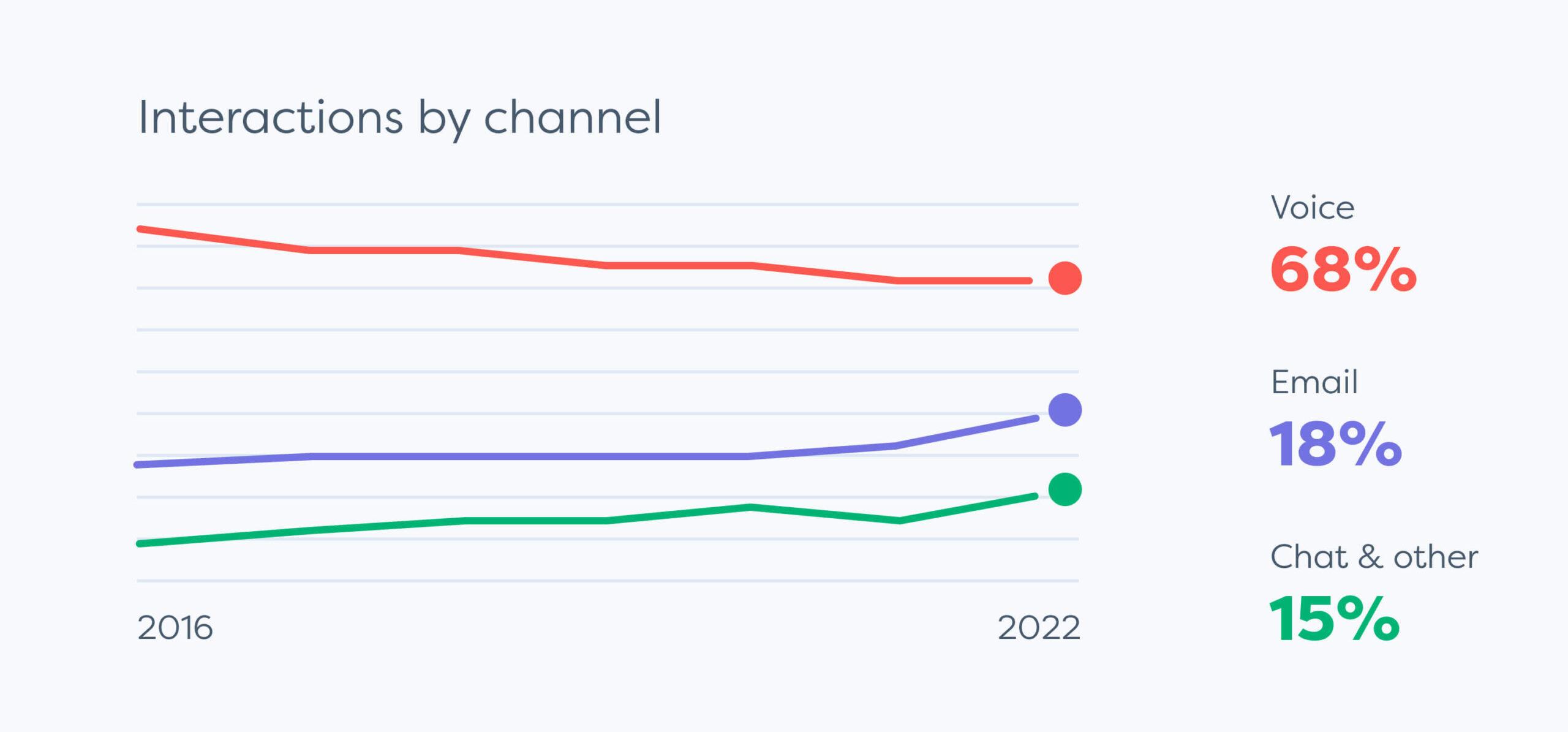Imagine getting hundreds or even thousands of messages or emails every month. The phones are ringing and there’s no end to it. It could be questions from customers, candidates, employees or your suppliers. Even large teams take a lot of effort to process them all. And what about when an unexpected crisis occurs in the form of a giant increase in prices or a pandemic? Your staff can’t keep up, and the user on the other side has to wait. And that’s the moment to embrace automation and leave some of the work to chatbots, voicebots and mailbots.
The same questions over and over again…
When does it end?
So you’ve added an FAQ section to the website. Is that enough? No, it’s not. Today’s customer wants answers right now. Waiting hours or days for someone to answer their question? That’ll get you a negative review on Google before you know it. Even the new generation that is growing up with a cell phone in their hand won’t spend time browsing your site. In short, a business that doesn’t actively reach today’s demanding customer is likely to lose them sooner or later.

Source: Broadridge CX Communication Report 2022
Customers are everywhere, you “just” need to
catch them
A study by Broadridge in 2022 showed how customer preferences shift every year. Despite earlier surveys predicting a decline in customer phone inquiries, the reality is different today. It turns out that even in today’s digital age, there is still a majority of customers who would rather call than text. However, chat communication channels are catching up every year and email is not losing popularity either.

Source: Broadridge CX Communication Report 2022
“We make sure customers find answers as quickly as possible – at anytime and anywhere. This increases customer satisfaction and helps businesses save time and costs through chatbots, voicebots and mailbots.”
– Vojtěch Dlouhý, Co-Founder & CEO
Don’t forget email automation!
Chatbots and voicebots are available to customers 24/7 on various chat channels and the telephone line (PBX). They don’t need to rest and can communicate with a large number of customers at once. But what about email communication? Can it be automated? Of course!
Email is still the #1 communication channel for some companies. But many of them can’t quite respond to emails effectively, and customers suffer as a result. Yet it can be done so much more efficiently!
For example – we can automatically read emails, sort them out by topic and either reply to them straight away or forward them to someone to handle them. This way we can handle a lot of emails automatically and save people up to 50% of their time. Isn’t that great?
How does it work in practice?
Artificial intelligence can read thousands of emails a month. It handles the recognition of the user’s intent, and for repetitive requests, it automatically selects a template for a reply. It can easily identify emails that do not need to be answered at all, whether they are spam or other unwanted messages, which in reality is around 50%.
At the same time, thanks to analytical tools, we can track all the outputs and further work with them in a comprehensive report. Employees then no longer waste time on routine and are all the more dedicated to their clients.
Automating communication makes a lot of sense in companies. Every movement of the mouse or picking up of phone counts, and as a result, it can save a few hours every month. Your employees can then focus more on valuable work with customers and clients.











